Among His Sings is the creation of the heavens and earth and all the creatures He has spread about in them (Surat ash- Shura, 29)

According to the theory of evolution, all living things have descended from one another. Initially, a single-celled organism developed out of inorganic substances, and this gradually turned into another, and all subsequent species eventually developed in this way. According to the theory, this process covered a period as long as 3.7 billion years and took place in stages. Therefore, according to the theory proposed by Darwin, the extraordinary variety of life is simply a product of natural processes and random effects.
However, scientific findings completely refute this claim. Many branches of science, such as paleontology, genetics and biochemistry, clearly show that not one single living species, let alone biodiversity, can be accounted for in terms of evolution..
In dealing with the invalidity of Darwinism's claims regarding speciation, let us first provide some general information about biological classification.
Try writing down the names of all the animals, plants and micro-organisms you have ever encountered or heard of. No matter how long your list, it will represent only a very small fraction of the living species on Earth. Suppose that others from different countries have also prepared such a list. A more comprehensive list may emerge when these are all combined together. But this time, the list will become confused because of some of the same life forms will be referred to by different names, or different ones by the same name.
To overcome these difficulties, biologists give every plant and animal a scientific name, such that all organisms are described according to a binomial classification system. The first word is generally Latin—a practice left over from the days when Latin was an international language. For example, the dogs you see every day are Latin-named Canis familiaris, and cats are Felis catus.
Scientific nomenclature makes it possible to distinguish between species whose common names are often confused. For instance, the bird known as the robin in Europe is different from the bird known by that name in America. Confusion has been prevented by giving these separate species different names. The European robin is properly known as Erithacus rubecula, and its American counterpart as Turdus migratorius.162
In addition to naming species both living and extinct, scientists also describe and classify them according to specific criteria. The science of naming, describing and classifying living things is known as taxonomy or systematics. For example, animals are classified according to such criteria as their body structures and systems, internal organs, developmental stages, behavior and genetic information. Information about extinct species is obtained from fossils.
The classification system in question consists of hierarchical categories, or seven main groups. In descending order of size, these are:
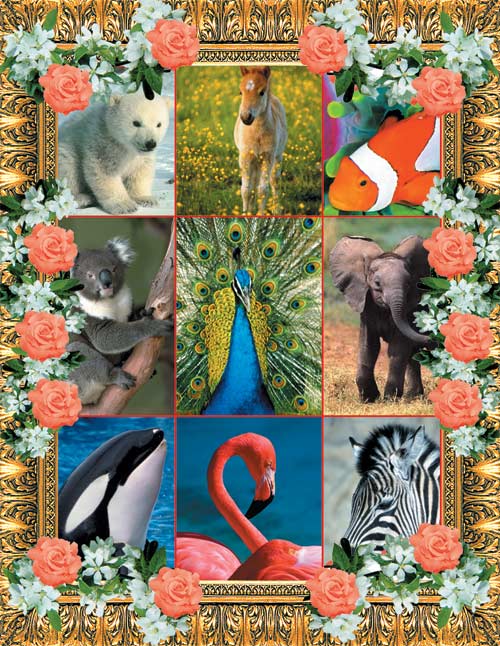
The animal kingdom contains more than a million described species, making it the largest of the kingdom
Kingdom
Phylum (plural: phyla)
Class
Order
Family
Genus (plural: genera)
Species
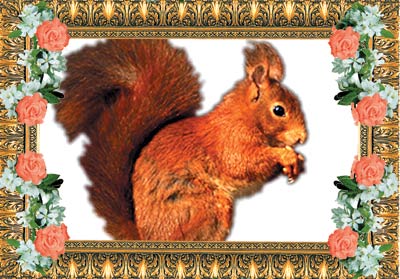
Every living thing occupies its own particular position in all of the above seven groups. (There are also sub-categories within this hierarchical classification.) For example, the tree we commonly refer to as the white pine is a member of the plant kingdom and of the phylum Tracheophyta. It is also a member of the class Pteropsida, the order Coniferales, the family Pinaceae, the genus Pinus and the species strobus.
The scientific name of the wolf, a carnivorous canine, is Canis lupus; it is also a member of the phylum of mammals, the order Carnivora, the family Canidae and the genus Canis.163
In this classification system, the largest unit is kingdom. Until the 20th century, most biologists divided the world of living things in two—either plants or animals. In the last century, however, progress in the fields of microbiology and biochemistry in particular revealed that this simple division didn't go far enough. Today, a five-kingdom classification is generally agreed upon. In addition to plants and animals, the fungi, protista and monera are also regarded as separate kingdoms.
The animal kingdom, containing more than 1 million described species, is the largest, made up of multi-celled organisms that digest food, generally move, and have complex systems and organs. The plant kingdom contains more than 260,000 species, which produce their own food by means of the exceedingly complex process of photosynthesis, and also meet the nutritional needs of other organisms. Fungi, which are not capable of photosynthesis and have no digestive systems such as those in animals, are a kingdom with some 100,000 members.
The Protista kingdom consists mainly of single-celled organisms with a cell nucleus, such as algae and diatoms. Some 100,000 members of this kingdom are known to exist. Monera, on the other hand, consists of single-celled organisms that lack any nucleus, such as bacteria: Some 10,000 species of this kingdom have been described.
In biological classification, the kingdoms are followed by phyla, whose number varies according to different biologists. Still, the classification of 32 animal phyla and 10 plant phyla is generally accepted. In the animal kingdom, all species in a particular phylum possess a similar body structure, although phyla are very different from one another. For example, the phylum that includes sponges is completely different from the phylum Chordata, which includes vertebrates—fish, mammals, birds and reptiles. The insects we are familiar with are of the phylum Arthropoda, the largest phylum in the animal kingdom, which also includes marine crustaceans.
Living things belonging to a particular class share many more common features than do members of a phylum. For example, birds, reptiles and mammals are all members of the phylum Chordata, but belong to different classes. Birds, which have wings and also feathers—a structure not to be found in any other animal group—are members of the class Aves. Reptiles, members of the class Reptilia, lay eggs, are cold-blooded and covered in scales. Mammals are members of the class Mammalia, and give birth to and suckle their young, are warm- blooded and generally covered in fur.
In biological classification, a class is divided into orders. The mammals with which we are familiar consist of 23 different classes. Those that feed on insects, like the mole and hedgehog, are members of the class Insectovira. Rodents such as mice and squirrels belong to the class Rodentia, and meat-eaters such as dogs and wolves belong to the class Carnivora.
The next rank is the family. Mammals, for instance, comprise more than 100 families. Though cats and dogs both belong to the class Carnivora, cats are members of the family Felidae, and dogs of the family Canidae.
Genera consist of living groups that bear a close resemblance to one another, but which are not generally able to crossbreed—dogs and foxes, for example, and different genera within the family Canidae. Dogs belong to the genus Canis, and foxes to the genus Vulpes.
The species is the basic unit in biological classification. A species may be described as a community of individuals that are able to reproduce among one another and share the same functional characteristics. Breeds or varieties within the same species typically have different scientific names. For example, the red fox is known as Vulpes vulpes, the desert fox as Vulpes zerda, and the long-eared fox as Vulpes macrotis. If there are different groups or varieties within a living species, each of these groups constitutes a different sub-species.
Living things are described and classified by biologists known as taxonomists. They divide into species those populations that mate only among themselves in nature, which give rise to viable offspring, and which resemble one another in terms of structural and functional properties. They determine the classification, such as the specific genus to which a species belongs, and which genera belong to which families.
Classifications by different taxonomists are basically similar, but still exhibit important differences. For example, five species may be grouped under one, two or three different genera. That is why scientists often differ and disagree regarding the classification of different living things.164
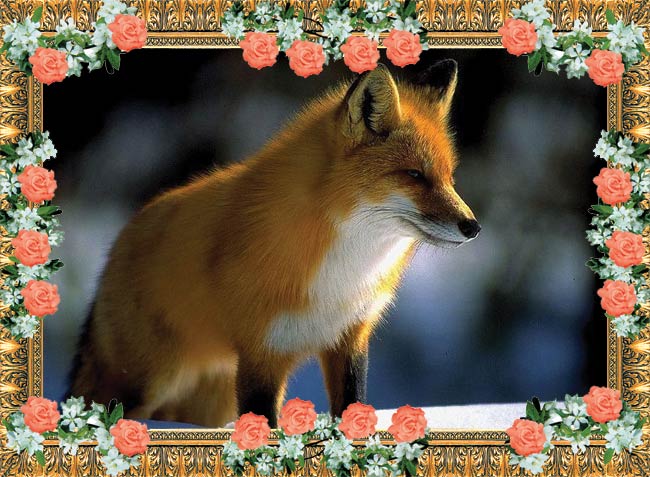
The classifications outlined above are vital in terms of scientific research and study. Some, however, imagine that classification is a part of the theory of evolution. The reason for this is evolutionist propaganda. Modern taxonomists are largely evolutionist biologists; and as a result, taxonomy and evolution are generally referred to in the same breath. Yet this is a grave error.
The foundations of taxonomy were laid before Darwin's theory of evolution was put forward. In addition, the founders of taxonomy were scientists who believed in God and creation.
The British scientist and theologian John Ray (1627-1705) led the way in classifying living things, in the sense this is understood today.165 Ray grouped plants, birds, mammals, fish and insects according to systematic criteria. Rather than classifying plants based on a single feature, he considered their structures in their entirety. He wrote several books on the subject, thus laying the foundations of the science of taxonomy. In his writings, he also set out his observations of the magnificent order in nature.166 Ray, who is remembered for his enormous contributions to science, stated that the systems and characteristics in living things were all marvels of creation, and expressed his views in these terms:
There is for a free man no occupation more worthy and delightful than to contemplate the beauteous works of nature and honour the infinite wisdom and goodness of God.167
The scientist regarded as the father of the modern biological classification system is the Swedish naturalist Carl Linnaeus (1707-1778),168 who first used the two-part scientific nomenclature system and developed a classification based on hierarchical categories. He gave a great many species their scientific names (such as Homo sapiens for human beings).169 The year 1753, the year when the 10th edition of his book Systema Naturae was published, is regarded as the start of the science of taxonomy.170
Linnaeus named and classified plant and animal specimens collected by himself and his students from all over the world, paying close attention to their structural similarities and differences. The system he developed is still in use, largely unaltered, today. So successful is his system in the description and classification of living things that he has become one of the most eminent figures in the history of science.
Linnaeus believed that God created living things and that species do not change. He summed up his research in these words: "There are as many species as the Infinite Being produced diverse forms in the beginning."171 According to him, classification revealed the Divine Order of God's creation.172 The interrelated hierarchy in living things was a sign of creation in God's flawless order and harmony, and not of evolution, as Darwin later believed. In his books, Linnaeus frequently stated that the magnificent plan he observed in the natural world could have come into being only through God's creation.

The hierarchical classification of motor vehicles does not suggest that they came into being spontaneously or by chance. On the contrary, it demonstrates that they were produced consciously by human beings according to specific blueprints. Living things on Earth can also be classified, because they came into being through the creation of Omniscient God, not as the result of unconscious coincidences.

Michael Denton
But the division of living things into hierarchical groups means something entirely different to evolutionists, who claim that biological classification is evidence for evolution. The Turkish biologist Ali Demirsoy, for example, makes this claim:
The characteristic of living things is that they are arranged according to a specific hierarchy in such a way as to form species, genera, families, orders, classes and kingdoms. Hierarchical arrangement is one of the most evident proofs of evolution. Were plants and animals not related among themselves, this hierarchical order could not have come about, and many groups would have developed in forms dissimilar to one another.173
Darwin and his followers attempted to use the work of such scientists as Ray and Linnaeus by distorting it. They portrayed similar structures among living things, and the classifications based on them, as evidence that living things were descended from a common ancestor.
In fact, however, a scientific explanation for similar structures among living things had been made before Darwinism came to dominate the scientific world. Natural scientists such as Carl Linnaeus and John Ray regarded the matter of similar characteristics among living things as an example of common creation. In other words, organs were similar not because they had evolved from a common ancestor, but because they had been created individually to serve a specific purpose. Modern scientific discoveries have confirmed this.174
Clearly, the classification of living things cannot be used as evidence in favor of evolution. For example, in his book Evolution: A Theory in Crisis, Professor Michael Denton examined this claim in the light of the scientific data and concluded that the hierarchical structure was no proof of evolution.175
The fact is that in clutching at classifications, evolutionists are making a serious mistake. Products of artificial design—such as automobiles, furniture and paintings can also be classified hierarchically amongst themselves. Yet this does not prove that they came into being spontaneously or by chance; on the contrary, it demonstrates that they were designed and produced by conscious human beings, according to a specific blueprint. Living things on Earth can be classified too, but that's because they exist by being created by Omniscient and Almighty God, and not through unconscious coincidences as maintained by evolution.
Following this general outline of biological classification, let us now examine Darwinism's main difficultyin the light of modern scientific findings.

Individual species of fruits and vegetables have genetic variations within themselves that give them different tastes, nutritional values and characteristics.

All human beings in the world have basically the same genetic information. Yet thanks to the potential variations permitted by that genetic information, some have almond-shaped eyes, others have red hair, while still others are tall in stature.
When Darwin's book The Origin of Species was published in 1859, he imagined that his theory could account for life's extraordinary diversity. He had observed that there were natural variations within a living species. Visiting animal fairs in England, for instance, he noted that breeds of cattle were very different, and that farmers could produce new breeds by selective crossbreeding. With this as his starting point, he then pursued the following logic: "Since living things can exhibit variety within themselves, then all of life can have descended from a single common ancestor of the course of long periods of time."
The fact is, however, that his hypothesis did not actually account for the origin of species at all. As the science of genetics advanced, it realized that variation within a species could never lead to a new species emerging. What Darwin imagined to be evolution was in fact variation.
Variation is a genetic phenomenon that causes individuals or groups within a species to exhibit different characteristics. For example, all the humans on Earth possess basically the same genetic information. But thanks to the variation potential that genetic information permits, some have dark skin, others red hair or blond, and some are tall in stature.
Variation can be very high even within a single species: Not only is there variation amongst humans in the genera and species of the bacteria that invade or live within us, but the organisms themselves often are highly diverse.176 For example, in dogs, one of the living species most familiar to us, there are a large number of variations: bulldogs, Italian poodles, German shepherds, Turkish Kangals, Dalmatians, Chows, Shih Tzus and many more such breeds. There are also many varieties in the fruit and vegetables we eat every day, with different tastes, nutritional contents, shelf lives and other characteristics.
But such variation represents no evidence for evolution. It represents only the emergence of different combinations of already existing genetic information, and does not endow resulting offspring with any new genetic information. The crucial question for the theory of evolution is of how brand-new information that can create—and define—a brand-new species could come into being.

The majority of natural populations display a high degree of variation.. There are many different varieties within the species of domesticated dog, of which we are particularly familiar.
Variation always takes place within the boundaries of genetic information, which bounds are referred to as the gene pool. All the characteristics in a living species' gene pool may emerge at various times, in various forms, thanks to variation. As a result, for example, breeds of reptiles may emerge with a longer tail or slightly shorter legs than others of their species, but the genetic information for a long tail or short legs already exists in the reptiles' gene pool. Yet variation cannot transform reptiles into birds by fitting them out with wings, adding feathers to them and altering their metabolisms. That's because such a transformation requires an increase in genetic information, but in variation, there is no question of such a thing occurring..
Darwin was unaware of all this when he launched his theory. At the time, it was believed that variations had no bounds. In 1844 he wrote: "That a limit to variation does exist in nature is assumed by most authors, though I am unable to discover a single fact on which this belief is grounded."177 In The Origin of Species he attempted to portray various examples of what were actually variation as the greatest evidence for his theory. In Darwin's view, for instance, crossbreeding different variations of cattle in order to produce cows with a greater milk output would eventually turn cattle into an entirely new species. The best expression of Darwin's idea of "unbounded change" is in these words from The Origin of Species:
I can see no difficulty in a race of bears being rendered, by natural selection, more and more aquatic in their structure and habits, with larger and larger mouths, till a creature was produced as monstrous as a whale.178
The reason why Darwin was so confident in his examples lay in the primitive level of scientific understanding in his day. As the result of similar experiments on living things, however, 20th century science revealed the principle known as genetic homeostasis179. This principle revealed that all attempts at crossbreeding were insufficient to change a living species and that between species, there were insuperable genetic barriers. In other words, the livestock breeders who mated different variations of cattle could not have produced another new species, as Darwin claimed. This was absolutely impossible.

Variations give rise to certain observable changes within the limits of a species' genetic information, but they never impart new genetic information to a given species. The roses shown opposite verleaf possess different features from one another. Yet they are all still the same species of rose, and can cross-pollinate with one another.

Variation within a species does not constitute evidence for evolution because such variation results from the emergence of different combinations of genetic information that already exist. Variations cannot add any new genetic information—they can shuffle the cards in a variety of different ways, but cannot add any new cards to the deck. Highly useful hybrids of wheat have been achieved through various cross-breeding techniques, but the wheat is still wheat, and not a new species.
Norman Macbeth, author of the book Darwin Retried, has this to say:
The heart of the problem is whether living things do indeed vary to an unlimited extent... The species look stable. We have all heard of disappointed breeders who carried their work to a certain point only to see the animals or plants revert to where they had started. 180
Luther Burbank, one of the most eminent authorities in the field of livestock raising, wrote that "there are limits to the development possible, and these limits follow a law."181
The biologist Edward Deevey describes how variation always takes place within specific genetic bounds:
Remarkable things have been done by cross-breeding... but wheat is still wheat, and not, for instance, grapefruit. We can no more grow wings on pigs than hens can make cylindrical eggs.
A more contemporary example is the average increase in male height that has occurred the past century. Through better health care (and perhaps also some sexual selection, as some women prefer taller men as mates), males have reached a record adult height during the last century, but the increase is rapidly disappearing, indicating that we have reached our limit. 182
In short, variations give rise to certain changes that always remain within the genetic limits of a species, but never impart to that species any new genetic information. That is why no variation represents an example of evolution. No matter how much you crossbreed different breeds of dogs or horses, the results will still be dogs or horses. No new species will ever appear, as the agricultural scientist Dr. Don Batten summarizes:
... variation within a kind, such as through breeding or adaptation, is not evolution. All the biological genetic "evidence" for evolution is actually variation within a kind, not evolution at all. 183

Variations can never give species totally new characteristics. For that reason, no variation is an example of evolution. No matter how often you cross-breed different breeds of horse, the results will still be horses, and no new species will emerge.
As you see, the science of genetics has revealed that the variations that Darwin imagined accounted for the origin of species in fact bear no such significance.
Therefore, evolutionist biologists have been forced to distinguish between variation within species and the formation of new species, and to advance two separate concepts regarding them. They gave the name micro-evolution to variation within species, and defined the formation of entirely new species as macro-evolution.
The concept of macro-evolution was first used in 1927 by the Russian biologist Juri'i Filipchenko.184 The idea that micro-evolution could be used as evidence for macro-evolution was proposed by a student of Filipchenko's, Theodosius Dobzhansky, in the 1930s. In his book Genetics and The Origin of Species, one of the basic texts of Darwinism, Dobzhansky suggested that the mechanisms of micro- and macro-evolution were the one and the same.185 This view received wide acceptance from evolutionist circles and has survived down to the present day. Richard Goldschmidt, a Berkeley University geneticist during those years, expressed the erroneous nature of this view: "The facts of microevolution do not suffice for an understanding of macroevolution."186 In fact, what Goldschmidt referred to as micro-evolution was nothing more than variations within species.
These two concepts have long appeared in biology textbooks, where a deceptive style is often used. The examples of variation that evolutionist biologists describe as micro-evolution actually have nothing whatsoever to do with the theory of evolution. That's because the theory of evolution maintains that living things can acquire new genetic information through the mechanisms of mutation and natural selection. But as we have already seen, variations can never give rise to any new genetic information and therefore, cannot lead to evolution. Referring to variations as micro-evolution reflects an ideological preference on the part of evolutionist biologists.
The variations that they deliberately refer to as micro-evolution are a simple biological phenomenon, examples of which we encounter frequently in daily life. (Think of all the varieties of cats, dogs, apples, tomatoes, plants and animals you have ever seen.) Macro-evolution, on the other hand, refers to major changes such as that of a dinosaur into a bird, or a bear into a whale. In other words, there is no difference between the claims of macro-evolution and fairy tales in which a frog transforms into a prince.
By using the concept of macro-evolution, evolutionist biologists seek to give the impression that is variations can give rise to brand new living species—and even genera—over the course of time. Indeed, many people who lack a sound knowledge of the subject are taken in by the superficial idea that micro-evolution can become macro-evolution in the long term. One can see many examples of this thinking. Some amateur evolutionists suggest that since the average height of human beings has increased by 2 centimeters (0.78 of an inch) over just the last century, that means that all kinds of evolution can occur over millions of years. But the fact is, as we have already seen, all variations such as increases in stature take place within specific genetic bounds and have nothing to do with evolution.

We frequently see examples of biological variations in our daily lives. All such instances of variations are simply fluctuations that occur within specific genetic bounds and that have nothing at all to do with evolution.
In fact, even contemporary evolutionist authorities accept that the variations described as micro-evolution cannot give rise to new living classes, or lead to macro-evolution. In a 1996 paper published in the journal Developmental Biology, the evolutionist biologists Scott Gilbert, John Opitz and Rudolf Raff stated that:
The Modern Synthesis is a remarkable achievement. However, starting in the 1970s, many biologists began questioning its adequacy in explaining evolution. Genetics might be adequate for explaining microevolution, but micro-evolutionary changes in gene frequency were not seen as able to turn a reptile into a mammal or to convert a fish into an amphibian. Microevolution looks at adaptations that concern only the survival of the fittest, not the arrival of the fittest. As Goodwin (1995) points out, "the origin of species—Darwin's problem—remains unsolved.187
That the variations known as micro-evolution cannot account for the claim of macro-evolution, and cannot explain the origin of species, is also admitted by other evolutionist biologists. The well-known evolutionist paleontologist Roger Lewin set out his conclusion at a four-day symposium attended by 150 evolutionists at the Chicago Museum of Natural History in November 1980:
The central question of the Chicago conference was whether the mechanisms underlying microevolution can be extrapolated to explain the phenomena of macroevolution ... The answer can be given as a clear, No. 188
The evolutionist biologists Fagerstrom, Schuster and Szathmary stated the same thing in an article published in Science magazine in 1996:
Major transitions in evolution—such as the origin of life, the emergence of eukaryotic cells, and the origin of the human capacity for language, to name but a few—could not be farther away from an equilibrium. Also, they cannot be described satisfactorily by established models of microevolution. 189
In short, micro-evolution is a biological phenomenon, and macro-evolution is an unscientific dogma—two entirely distinct concepts. Nonetheless, many evolutionists still believe that these two concepts are one and the same thing, and that micro-evolutionary changes can turn into macro-evolutionary ones over long periods of time.190

There is no difference between Darwinist claims about "macroevolution" and fairy tales in which frogs turn into princes.
Other scientists, however, are aware that such a claim totally conflicts with the picture revealed by scientific findings and the fossil record. Douglas Erwin, from the American Museum of Natural History emphasized this in a paper that appeared in the journal Evolution and Development in 2000.191 According to the American biologists Douglas Erwin and James Valentine, to account for the origin of new physical characteristics with micro-evolutionary changes that are in fact nothing more than variations within species is incompatible with the available evidence.192
The fact is, macro-evolution has never been observed. There is no explanation compatible with reason, logic and science as to how this might take place. Professor of Microbiology Carl Woese expresses his view on the subject: "[T]he term ‘macroevolution' serves more to hide our ignorance than symbolize our understanding."193
Consider the subjects depicted by evolutionists as concrete and observed instances of Darwinism, which they put forward at every opportunity as fundamental proofs of evolution. The Galapagos finches, the Industrial Revolution moths, bacterial resistance to antibiotics, and insects' resistance to DDT immediately come to mind, but it is absolutely misleading to portray these as evidence of evolution. These cases are cases of variations, or micro-evolution, that present no evidence for evolution. The Galapagos finches and the Industrial Revolution moths will be discussed later in this book, where we make it clear that these life forms constitute no evidence for the theory of evolution. (For biological resistance to poisons, see Darwinism Refuted by Harun Yahya, New Delhi: Goodword Books, 2002.)
Evolutionists maintain that the first single-celled organism emerged billions of years ago from inorganic substances, and that the glorious diversity of life on Earth, emerged over the course of hundreds of millions of years. Note that according to the Darwinist claim, millions of species formed from one single species under the influence of natural processes and coincidence. As this irrational and unscientific claim shows, the formation of species—that is, speciation—represents the basis of the theory of evolution. It is particularly clear that a claim not based on concrete evidence, observations and scientific research is of no value at all. Darwinism's claim that one species turned into millions of other species is a huge one that requires countless amounts of evidence and findings. In fact, though, there is not a single piece of scientific evidence for evolutionists' claims regarding speciation ever since the time of Darwin, evolutionists have produced a conceptual confusion and depict variations as evidence for speciation.
First let's consider the concept of species to get a better understanding of the evolutionist deception. Descriptions have been produced by various experts from different biological fields. As put by Troy Wood and Loren Rieseberg of Indiana University, "Evolutionary biologists have proposed a diverse, almost innumerable list of species concepts…"194
Biologist John Endler explains the complication as follows:
Species are "tools that are fashioned for characterizing organic diversity" (Lewin,1979). Just as there are a variety of chisels made for different purposes, different species concepts are best for different purposes; and just as it is inadvisable to use a carving chisel to cut a mortise, problems arise when one species concept is used when it is inappropriate. Confusion and controversy have often resulted because different people working with different groups of organisms mean different things by "species."195
Ali Demirsoy, one of Turkey's most prominent exponents of Darwinism, expresses the truth of the matter this way:
The question of by what bounds the species, the basic unit in the classification of plants and animals, should be separated from other species—in other words, "Species Definition"— is one of the most difficult for biology to answer. It appears impossible in the present state of our knowledge to give a definition of the species that applies to all plant and animal groups.196
Mention the word species, and most people will think of life forms such as dogs, horses, spiders, dolphins, wheat or apples. However, biologists define the concept of species in a rather different way. In modern-day biology, a living species in the most general sense consists of a population of individuals able to mate and reproduce with one another. This definition divides life forms that we generally speak of as if they were one single species into a number of different ones. For example, some 34,000 species of spiders have been described.197
To better understand the evolution deception regarding speciation, we first need to define geographic isolation. Within any living species, there will be differences stemming from genetic variation. If geographical obstacles such as a mountain chain or river arise between individuals of a species, and if they become isolated from one another, then in all likelihood, within these two separated groups, different variations will begin to dominate.198
Assume that in one group (variation A), darker skin and longer fur begin to predominate; and that another group (variation B) has shorter fur and lighter color. The longer the two populations remain separated from one another, the sharper variations A and B will become.199 Variations like these, with clear morphological differences despite their belonging to the same species, are known as subspecies.
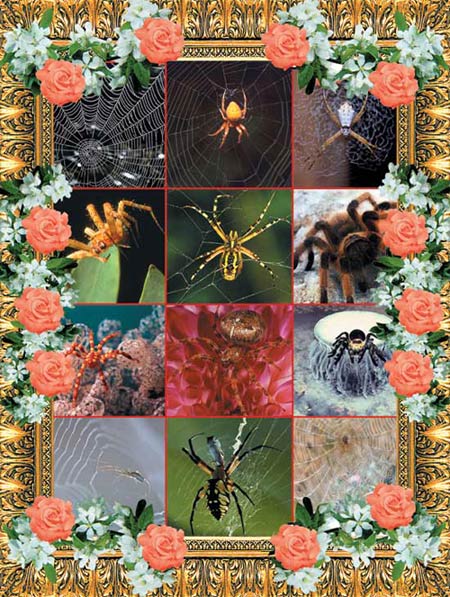
We often commonly refer to various members of a class or order as one single species—when these are actually a considerable number of species with subtle differences to distinguish them. For example, some 34,000 species of spider have been identified, but in daily life we describe most of them simply as "spiders."
At this point, the speciation claim enters the picture. Sometimes, after variations A and B have split away from one another due to geographic isolation and are brought back together again, their members are unable to interbreed with one another. Since they cannot mate, they cease being subspecies, according to the biological definition, and become separate species. This is known as speciation.
Evolutionists take this concept and extrapolate it "Look! There is speciation in nature. In other words, new species emerge through natural mechanisms. So all species must have come into being in this same way." In fact, however, a serious deception is being perpetrated here, because important points are being overlooked or ignored:
1) Variations A and B, after being isolated from one another, may be unable to mate when reunited again. Yet this phenomenon generally stems from mating behavior. In other words, individuals belonging to variations A and B regard each other as foreigners by the other, and thus feel no inclination to mate with others that they perceive as different—even thouigh there is no genetic incompatibility to prevent it. In terms of genetic information, they all remain members of the same species. (For this very reason, the concept of species remains a subject of debate in biology.)
2) The really important factor is that this speciation means a loss of genetic information, rather than an increase. The two variations have separated, but the reason for their division is not that either one has acquired any new genetic data. Neither variation has acquired any proteins or new enzymes, much less a new organ. There is no development here. On the contrary, instead of a previous population that contains different, possibly recessive, pieces of genetic information (using our example, a population with both long and short fur, and dark and light coloration), there are now two populations that is each relatively impoverished in terms of genetic data.

The rabbit species displays considerable possible variations within itself, such as white fur, grey fur, long or short ears. However, one type never turns into another.
Therefore, nothing about speciation provides any support for the theory of evolution. Because it claims that all living species developed by chance, from the simple to the more complex, therefore, in order for the theory of evolution to be taken seriously, it needs to demonstrate mechanisms that can increase genetic information. The bifurcation of an existing species because of a loss of genetic variation, obviously, a different phenomenon entirely.
Evolutionists actually admit this lack of relevance. For that reason, evolutionists describe examples of variations within a species, and speciation by division into two populations (as you saw in the previous section) as micro-evolution—in the sense of variation within a species that already exists. However, the use of the word "evolution" in the term is deliberately misleading, because no evolutionary process is happening at all. The situation consists of only various combinations and distributions of genetic information already existing in that species' gene pool.
Then how did living types first emerge? How did the five kingdoms—monera, protista, fungus, plant and animal—emerge on Earth? How did the higher categories—the phyla, classes, orders, families; and for that matter, such basic categories as mammals, birds, vertebrates and crustaceans—first appear? These are the questions that evolutionists need to address.
As already stated, evolutionists refer to these subjects as macro-evolution, which is actually what they mean by the theory of evolution, because the genetic variations that Darwinists insist on calling "micro-evolution" are biological phenomena that everyone can observe and agree on. And no matter how much evolutionists employ the term evolution in describing such phenomena, they actually have nothing to do with evolution at all. On the other hand, the macro-evolution claim, has no supporting evidence, either in biological observations or in the fossil record.
People lacking sufficient information on the subject may well fall into the error of thinking that "Since micro-evolution takes place in a very short space of time, macro-evolution could take place over tens of millions of years." Some evolutionists fall into the exact same error or seek to make use of it to convince others of the truth of their theory. All the so-called proofs of evolution proposed by Charles Darwin in The Origin of Species are of that kind, as are the examples put forward by later evolutionists. In their examples, they seek to use as evidence for their theory the genetic variety that they describe as micro-evolution but which actually has nothing at all to do with what they describe as macro-evolution.
Despite all this discussion of micro- and macro-evolution and speciation, living things appeared on Earth as types with their own different structures (as is confirmed by the fossil record). Different variations and subspecies may appear within them, thanks to the richness of their gene pools. For example, there are rabbits that exhibit variations such as white fur, grey fur, longer or shorter ears, and these variations become more pronounced in a given environment, depending on which natural conditions support them most appropriately. But species never turn into other species. There is no natural mechanism that can effect this, that can design new types and develop the new organs, systems and body plans they require. Every species has been created with its own unique structures. And since God has created every one of them with a potential for variety, a wide but finite variation often emerges within each type.

Theodosius Dobzhansky
Apart from amateurs with only a superficial knowledge of the subject, just about all evolutionists are well aware of the real difficulty they face in trying to account for the diversity of species on Earth. In his book Genetics and the Origin of Species, Theodosius Dobzhansky, one of the architects of neo-Darwinism, stated that the real problem facing evolutionists was the variety of life.200
This is the real issue on which Darwin and his followers must shed light. In The Origin of Species, Darwin offered no concrete evidence, but merely speculated. In one letter, cited by his son Francis Darwin in his book Charles Darwin's Life and Letters, he admitted this: "When we descend to details, we can prove that no one species has changed."201
Darwin hoped that the answers to these questions would later be found and the formation of species proven over the course of time and with further scientific research. On the contrary, scientific discoveries have refuted Darwin every time. Despite all the efforts made by evolutionists over the intervening 150 years, speciation through evolutionary mechanisms has remained devoid of any proof to support it—as shown by honest confessions on the subject by various evolutionists.
Although speciation is the backbone of the theory of evolution, it is also a concept strikingly shrouded in darkness. (More accurately, evolutionists possess no other evidence than the examples of micro-evolution and variation they have distorted.) For example, in a paper published in 1999, the Indiana University biologists Troy Wood and Loren Reiseberg wrote that very little is known about the biological mechanisms that give rise to species formation.202 As Professor Gareth Nelson of the American Museum of Natural History admits, "The ‘species problem'' is perennial, and speciation remains as much a black box as ever."203
Cornell University's Professor Richard Harrison sets out the latest position in an article published in Nature magazine in 2001:
Natural communities harbor an enormous variety of species ... But what of the origin of diversity? Much less has been written about how new species arise—although the process of speciation is central to evolutionary biology.204
It is not at all surprising, actually, that so very little has been written, because scientific discoveries have revealed that one species cannot turn into another and that change takes place only within species, and within specific bounds. Not a single example of speciation through evolutionary mechanisms has been observed. In an article published in the 18 January, 2001, edition of Nature, the evolutionist biologists Darren Irwin, Staffan Bensch and Trevor Price admit as much: "The evolutionary divergence of a single species into two has never been directly observed in nature."205
Professor of Anthropology Jeffrey Schwartz, from Pittsburgh University, emphasizes the same fact in his book, Sudden Origins: Fossils, Genes, and the Emergence of Species:
... Nevertheless, it was and still is the case that, with the exception of Dobzhansky's claim about a new species of fruit fly, the formation of a new species, by any mechanism, has never been observed. 206
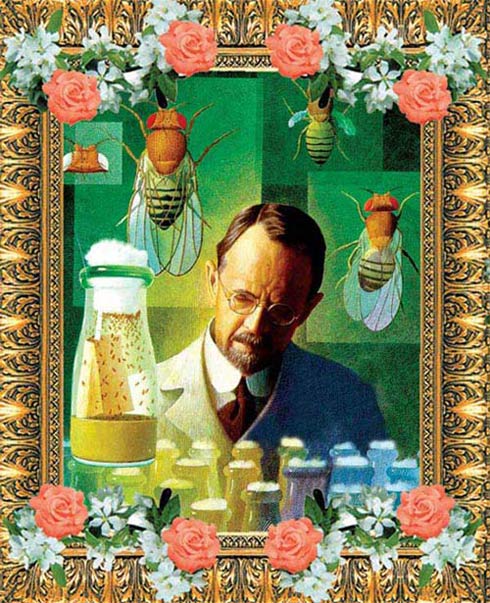
Fruit flies have been bred and subjected to mutations for some 70 years. But no evolutionary change has ever taken place. No case of speciation has been encountered, and fruit flies have remained as simply fruit flies.
Faced with these facts, some evolutionists propose an alibi along the lines of "We cannot observe speciation through evolution, because evolutionary mechanisms act over such lengthy periods of time. Therefore, speciation cannot be observed in nature or in the laboratory." This search for consolation has no scientific basis: No case of speciation has ever been seen in creatures such as fruit flies or bacteria, whose life spans are very brief. Thousands of generations of these organisms can therefore be observed by a single scientist in a few years' time.207 Countless experiments and studies have to date been conducted on various micro-organisms and animal species, and all have demolished evolutionist dreams.
One evolutionist, Kevin Kelly, editor of Wired magazine and director of the All Species Foundation, states that:
Despite a close watch, we have witnessed no new species emerge in the wild in recorded history. Also, most remarkably, we have seen no new animal species emerge in domestic breeding. That includes no new species of fruit flies in hundreds of millions of generations in fruit fly studies, where both soft and harsh pressures have been deliberately applied to the fly populations to induce speciation... In the wild, in breeding, and in artificial life, we see the emergence of variation. But by the absence of greater change, we also clearly see that the limits of variation appear to be narrowly bounded, and often bounded within species. 208
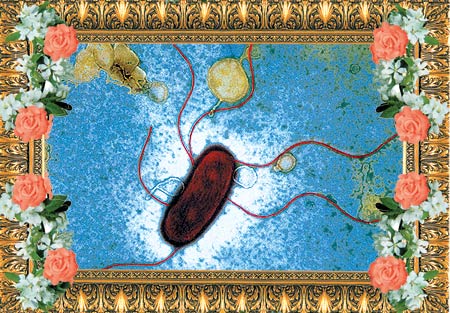
In all the years of experimentation and research into the bacterium Escherichia coli, no other species of bacterium of other multi-celled organism has ever emerged. E. coli has always remained E. coli.
Fruit flies have been reared and constantly subjected to mutations for some 70 years, but no speciation has ever been encountered. No evolutionary change has taken place, and fruit flies have always remained fruit flies.209 Similarly, no new species or multi-celled organism has emerged from the experiments and research conducted for many years on the single-celled bacterium Escherichia coli, which has always remained E coli.210
The fossil record itself also definitively rejects the concept of speciation. In the fossil record, there is no trace of the countless intermediate forms that should, according to Darwinism, have once existed.211
The origin of species, the emergence of new species and the diversity of life cannot be explained in terms of natural processes and random factors, as the theory of evolution maintains. Moreover, recent findings show that Darwinism is an unscientific and unrealistic theory, and a great many scientists today are aware of this. However, very few biologists express such views openly, out of a fear of being excluded from the scientific world. One of these is Professor Lynn Margulis of Massachusetts University, whose views on this subject were included in Kevin Kelly's book Out of Control: The New Biology of Machines:
"It is totally wrong. It's wrong like infectious medicine was wrong before Pasteur. It's wrong like phrenology is wrong. Every major tenet of it is wrong," said the outspoken biologist Lynn Margulis about her latest target: the dogma of Darwinian evolution. [With her theses], Margulis was ... denouncing the modern framework of the century-old theory of Darwinism, which holds that new species build up from an unbroken line of gradual, independent, random variations. Margulis is not alone in challenging the stronghold of Darwinian theory, but few have been so blunt. 212
In "Ecology, Evolution and Behavior," an article in the 11 May, 2000, edition of Nature magazine, Professor Tilman neatly sum up the evolutionist dilemma:
The existence of so great a diversity of species on Earth remains a mystery.213
In conclusion, evolutionists have no answers regarding the origin and diversity of species. If they wish to find the answer, then they must abandon their belief in Darwinist deceptions and instead accept that it is Omniscient and Almighty God Who created every living species with its rich potential for variation.
Creation is unique to God. No matter how they may strive, those who deny this fact will inevitably be doomed to disappointment:
Humanity! An example has been made, so listen to it carefully. Those whom you call upon besides God are not even able to create a single fly, even if they were to join together to do it. And if a fly steals something from them, they cannot get it back. How feeble are both the seeker and the sought! (Surat-al-Hajj, 73)

Among His Sings is the creation of the heavens and earth and all the creatures He has spread about in them (Surat ash- Shura, 29)
162 M. Encarta Encyclopedia 2001 Deluxe Edition CD, "Classification."
163 Encyclopedia Britannica 2001 Deluxe Edition CD, “Taxonomy, Ranks”.
164 Daniel Otte, “Species and Speciation: An Overview”, Encyclopedia of Life Sciences, 2000, ğ.els.net.
165 David Allen, “Ray, John”, Encyclopedia of Life Sciences, 2000, ğ.els.net.
166 M. Encarta Encyclopedia 2001 Deluxe Edition CD, “Ray, John”.
167 “John Ray”, University of California, Berkeley, 2002, http://ğ.ucmp.berkeley.edu/history/ray.html.
168 Alessandro Minelli, “Classification”, Encyclopedia of Life Sciences, 1999, ğ.els.net.
169 Peter F. Stevens, “History of Taxonomy”, Encyclopedia of Life Sciences, 2001, ğ.els.net.
170 Henry Gee, In Search of Deep Time, Cornell University Press, Ithaca, 2001, p. 117.
171 Niles Eldredge, The Pattern of Evolution, W.H. Freeman and Company, New York, 2000, p. 73.
172 “Carl Linnaeus”, University of California, Berkeley, 2002, http://ğ.ucmp.berkeley.edu/history/linnaeus.html.
173 Ali Demirsoy, Yaşamın Temel Kuralları, Cilt I/Kısım I, 11. baskı, Meteksan A.Ş., Ankara, 1998, p. 653.
174 It is natural that there should be similarities among living things, because they are composed of the same molecules, use the same water and air, and consume foodstuffs made up of the same molecules. Their metabolisms, and thus their genetic structures, will of course resemble one another. But thisis no evidence that they are descended from a common ancestor; it is the result of their being created on the basis of the same blueprint. For detailed information, see Harun Yahya's The True Origin of Life, İstanbul: Vural Yayıncılık, , 2000.
175 Michael Denton, Evolution: A Theory in Crisis, Adler&Adler Publishers, Maryland, 1986, p. 136-137.
176 Martin J. Blaser and James M. Musser, "Bacterial polymorphisms and disease in humans, J Clin Invest, February 2001, Volume 107, Number 4, 391-392
177 Charles Darwin, The Origin of Species: A Facsimile of the First Edition, Cambridge: Harvard University Press, 1964, p. 184.
179 Definition of Genetic Homeostasis, http://www.answers.com/topic/genetic-homeostasis
180 Norman Macbeth, Darwin Retried: An Appeal to Reason, Harvard Common Press, New York, 1971, p. 33.
181 Norman Macbeth, Darwin Retried: An Appeal to Reason, p. 36.
182 Edward S. Deevey, Jr., "The Reply: Letter from Birnam Wood," Yale Review, 1967, Vol: 61 p. 636.
183 Dr. Don Batten, "Genetics and Biology," http://www.thematrix.co.uk/texttopic.asp?index=8
184 "Macroevolution, Its Definition, Philosophy and History," http://www.talkorigins.org/faqs/macroevolution.html
185 Theodosius Dobzhansky, Genetics and the Origin of Species, New York: Columbia University Press, 1937.
186 Richard B. Goldschmidt, The Material Basis of Evolution, New Haven: Yale University Press, 1940, p. 8.
187 Scott Gilbert, John Opitz, Rudolf Raff, "Resynthesizing Evolutionary and Developmental Biology," Developmental Biology 173, Article No. 0032, 1996, p. 361.
188 R. Lewin, "Evolutionary Theory Under Fire," Science, vol. 210, 21 November 1980, p. 883.
189 T. Fagerstrom, P. Jagers, P. Schuster, E. Szathmary, "Biologists put on mathematical glasses," Science, vol. 274, 20 December 1996, pp. 2039-2040.
190 Sean B. Carroll, "The Big Picture," Nature, Vol. 409, 8 February 2001, p. 669; Paul R. Ehrlich, Human Natures, Washington, D.C.: Shearwater Books, 2000, p. 46.
191 D.H. Erwin, "Macroevolution is more than repeated rounds of microevolution," Evolution & Development, Vol. 2, 2000, pp. 78-84.
192 J.W. Valentine, D.H. Erwin, "Interpreting Great Developmental Experiments: The Fossil Record," in , R.A. Raff, E.C. Raff (editors), Development as an Evolutionary Process, New York: Alan R. Liss, Inc., 1987, p. 95.
193 C.R. Woese, "Macroevolution in the microscopic world", C. Patterson (editor), Molecules and Morphology in Evolution, Cambridge: Cambridge University Press, 1987, p. 177
194 Troy E. Wood, Loren H. Rieseberg, "Speciation: Introduction", Encyclopedia of Life Sciences, 1999, ğ.els.net
195 J.A. Endler, "Conceptual and Other Problems in Speciation,", in D. Otte, J.A. Endler (editors), Speciation and Its Consequences, Sunderland, Massachusetts: Sinauer Associates,, 1989, p. 625.
196 Prof. Dr. Ali Demirsoy, Yaşamın Temel Kuralları, Vol. I / November I, 11th ed., Ankara: Meteksan Yayınları, , 1998, p. 624.
197 M. Encarta Encyclopedia 2001 Deluxe Edition CD, "Spider (arthropod)."
198 Timothy A. Mousseau, Alexander E. Olvido, "Geographical Variation," Encyclopedia of Life Sciences, 2000, ğ.els.net.
199 The same also applies to human beings. The different races on Earth have different characteristics due to their geographic isolation. Dark skin came to predominate in one race and since these people lived in the same region and reproduced among themselves, a black-skinned race came into being. The same applies to oriental races. The differences in question (skin color, eye color and shape, height, hair color, etc.) were present in the genetic information of the first human beings, but some of these characteristics gradually came to predominate in human populations in different regions of the world, and different races emerged accordingly. Were it not for geographic isolation, if all the races on Earth had intermarried for centuries, then everyone would be a "cross-breed," there would be no blacks, whites or orientals. All human beings would be an "average" of these features.
200 Theodosius Dobzhansky, "Genetics and the Origin of Species", American Midland Naturalist, Vol. 18, No. 6 (Nov., 1937), preface.
201 Francis Darwin, The Life and Letters of Charles Darwin, Vol. II, New York: D. Appleton and Company, , 1888, p. 210.
202 Troy E. Wood, Loren H. Rieseberg, "Speciation: Introduction", Encyclopedia of Life Sciences, 1999, www.els.net.
203 G. Nelson, "Species and Taxa: Systematics and Evolution,", in D. Otte, J.A. Endler (editors), Speciation and its Consequences, Sunderland, Massachusetts: Sinauer Associates, 1989, pp. 73-74.
204 Richard G. Harrison, "Diverse origins of biodiversity," Nature, Vol. 411, 7 June 2001, pp. 635-636.
205 D.E. Irwin, S. Bensch, T.D. Price, "Speciation in a ring," Nature, Vol. 409, 18 January 2001, p. 333.
206 Jeffrey H. Schwartz, Sudden Origins: Fossils, Genes, and the Emergence of Species, New York: John Wiley & Sons, , 2000, p. 287.
207 For detailed information, see Harun Yahya, Darwinism Refuted, New Delhi: Goodword Books, November 2000.
208 Kevin Kelly, Out of Control: The New Biology of Machines, London: Fourth Estate, 1995, p. 475.
209 Gordon R. Taylor, The Great Evolution Mystery, New York: Harper & Row, 1983, p. 48.
210 L.P. Lester, R.G. Bohlin, The Natural Limits to Biological Change, second edition, Dallas: Probe Books, , 1989, p. 88.
211 For detailed information, see Harun Yahya, Darwinism Refuted, New Delhi: Goodword Books, November 2000.
212 Kevin Kelly, Op cit., pp. 470-471.
213 David Tilman, "Causes, consequences and ethics of biodiversity," Nature, Vol. 405, 11 May 2000, p. 208.